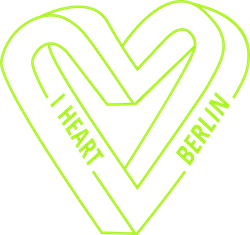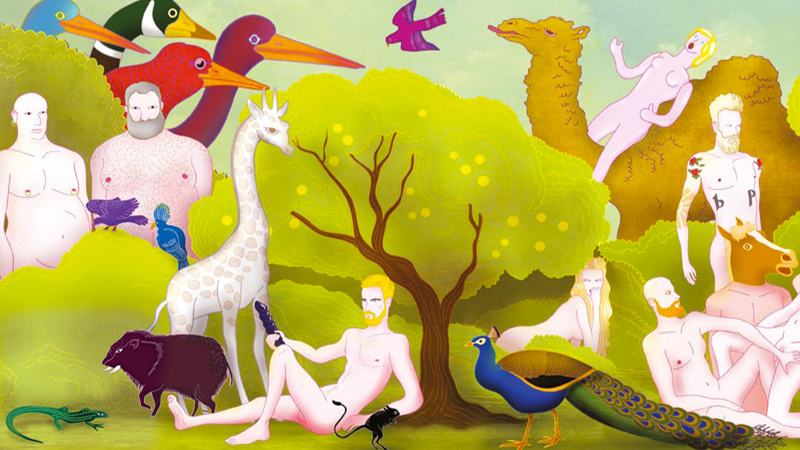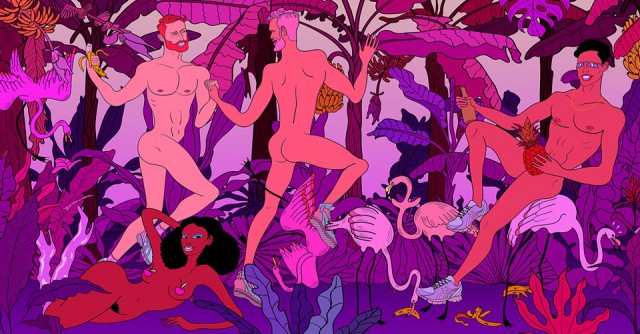illustrations: Nicola Napoli
As far as I can tell, there is no greater threat to a child’s physical health than Berlin’s playgrounds. Don’t be fooled by their cute themes, like Underwater World (Kreuzberg), Dragonland (Friedrichshain), and Indiana Jones (Kurfürstendamm). Strewn about these playgrounds are sharp nuts and bolts, rough rope bridges, and slides of heat-inducting aluminum. But do Berliners seem to mind? Not one bit.
I’m convinced that Berlin’s playgrounds teach impressionable young Berliners to associate good times with the rusted nails, exposed wiring, and holes in the dirt. That’s why the most popular nightclubs among adult Berliners resemble decrepit playgrounds. Berliners have become masters of recreating the Lord of the Flies landscapes of their youths.
What’s interesting, however, is that this reenactment of childhood playtime doesn’t stop at shoddy construction. Here are a few other similarities I’ve noticed between playground and club fun.
Gatekeepers
There’s always a gatekeeper.
When you were young, you had to convince your parents to let you play. They were always skeptical. Did you do your chores? Finish your homework? Eat your broccoli?
Berlin bouncers are the new parents. They are the adults who decide whether you can go inside rather than outside. They test your knowledge to adjudge your club-worthiness. Who are you with? Who’s playing? Are you drunk?
Then and now, you try to keep cool during the interrogation. You know that any sign of excitement will arouse the gatekeeper’s suspicion. They’ll wonder what rules you’re about to break that you’re so jazzed about. The answer: So many rules. But you don’t let your face show it.
![]()
*
Deep Questions
Once past the gatekeeper, you start making friends.
“Are you a unicorn?” a child might have asked you on the playground. Back then, everyone was so deep in imaginary plot-lines that small talk was unnecessary. It wasn’t important to find out what kiez little Ella lived in. It was important to find out whether little Ella identified as a unicorn.
Unicorns may not come up in your Berlin nightclub conversations, but then again, they might. Hallucinogenics are fun. The point is that you go to clubs open to the potentiality of interactions. You’re deep in your own stories and skip small talk as a result. You dive right into questions that matter, like, “Want to explore this parking garage?” or “Shall we look for dead birds and/or cocaine?”
.
Inclusivity
When you were young, you didn’t know your “shoulds.” You didn’t know that someone who looked one way should act another, or vice versa. You regarded other kids on the playground with unguarded curiosity and assumed that they, like you, were just there to have fun.
This is perhaps the best holdover from the halcyon days of childhood. Berlin’s clubs are famous for their lack of “shoulds.” The way you act, dress, dance, smile, or play ping pong has no bearing upon whether you belong. You belong if you come to have fun in peace. Inside, you melt into an environment of hyper-tolerance and inclusivity. You feel welcome. You feel safe.
Notwithstanding the rusted nails and fraying rope bridges.
Text: Jessica Guzik, illustrations: Nicola Napoli
* * *
Jessica Guzik is an American freelance writer based in Berlin who recently published Let’s Take Berlin, a book about expat life in the city. The above story is an excerpt from the book exclusively edited for iHeartBerlin. If you are curious you can get the eBook for free on Kindle until September 17th, 2017.
Artist and illustrator Nicola Napoli has been featured regularly on iHeartBerlin with his joyful and witty illustrations of Berlin’s nightlife of which you can purchase many as prints through his webshop.



